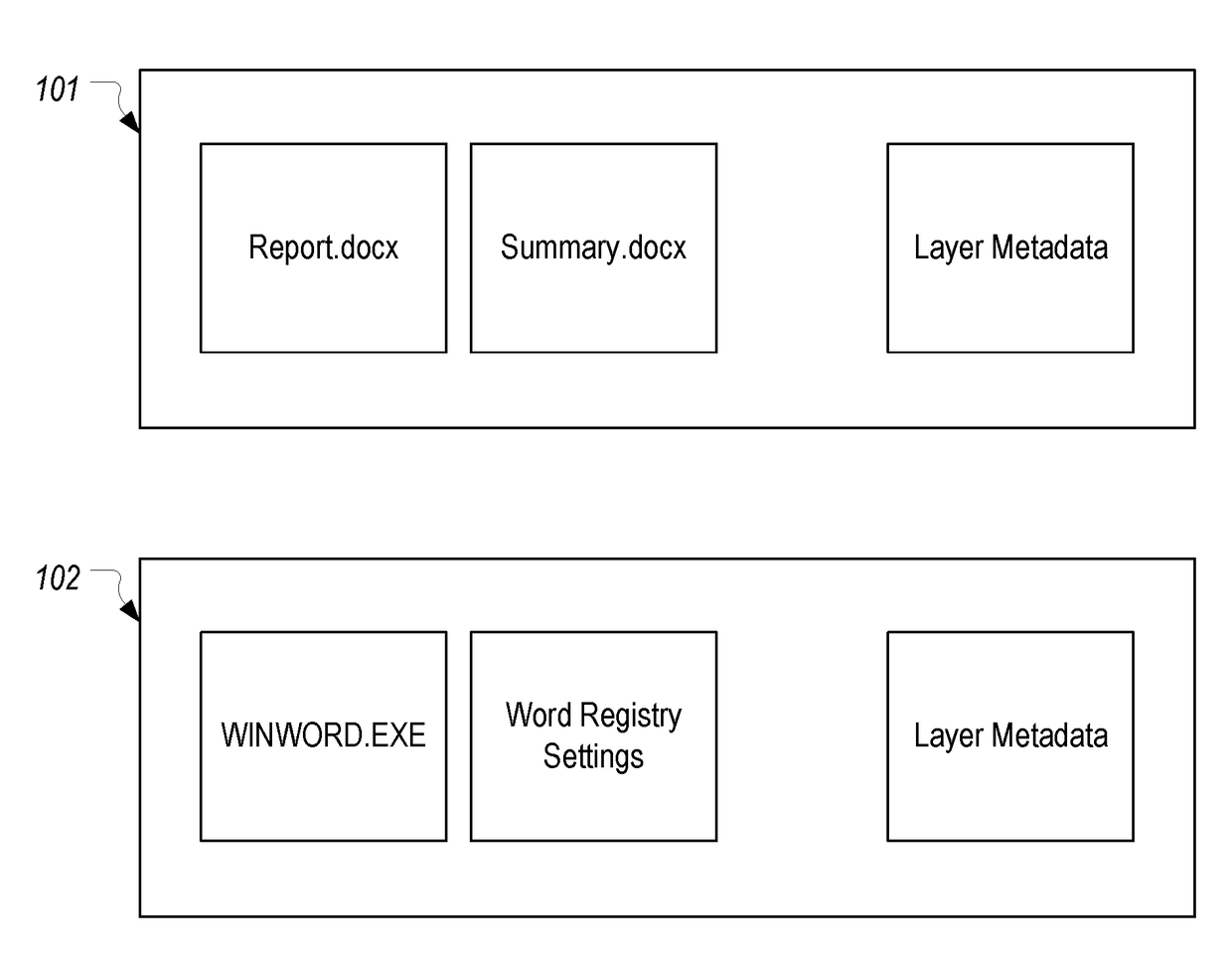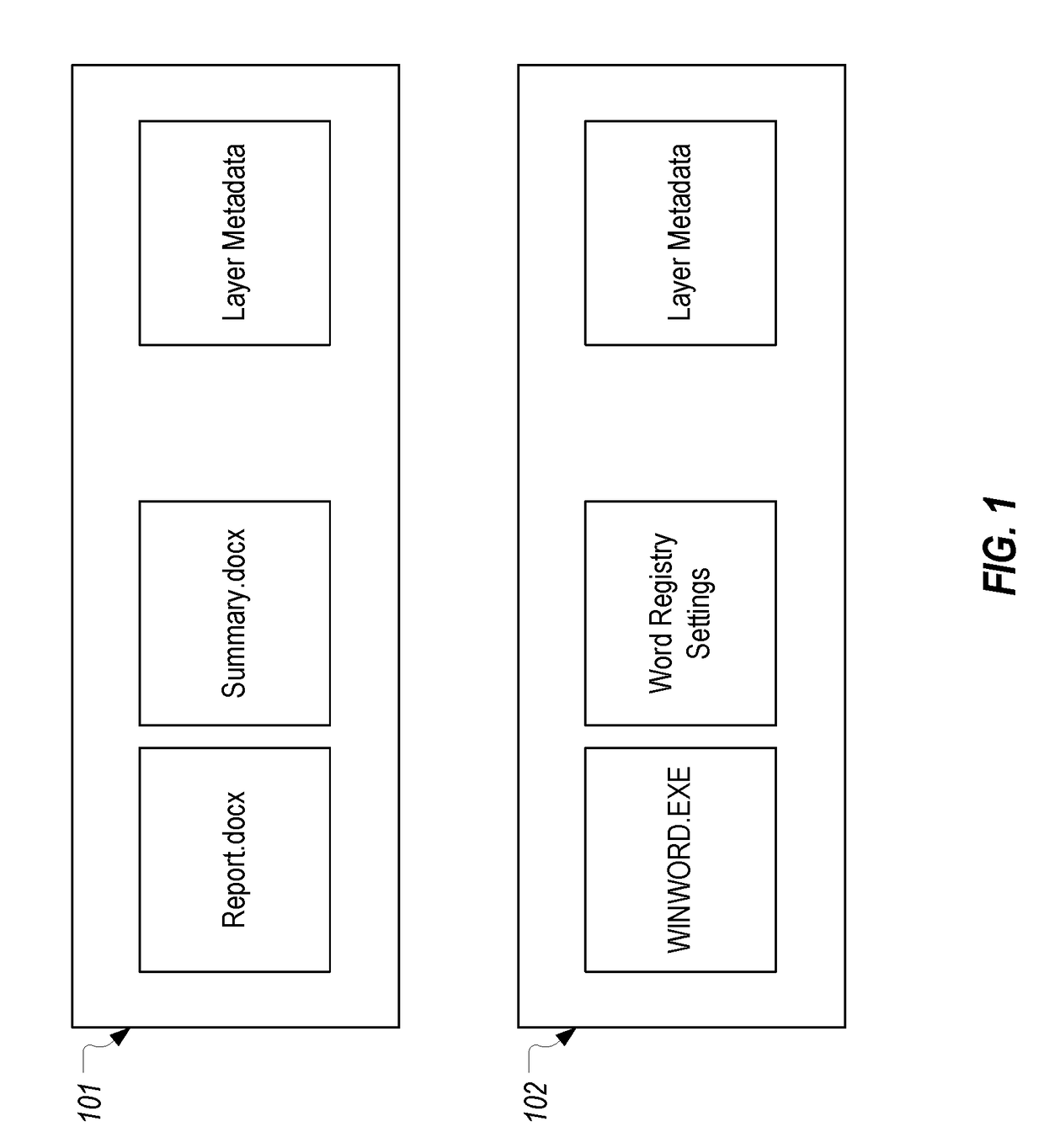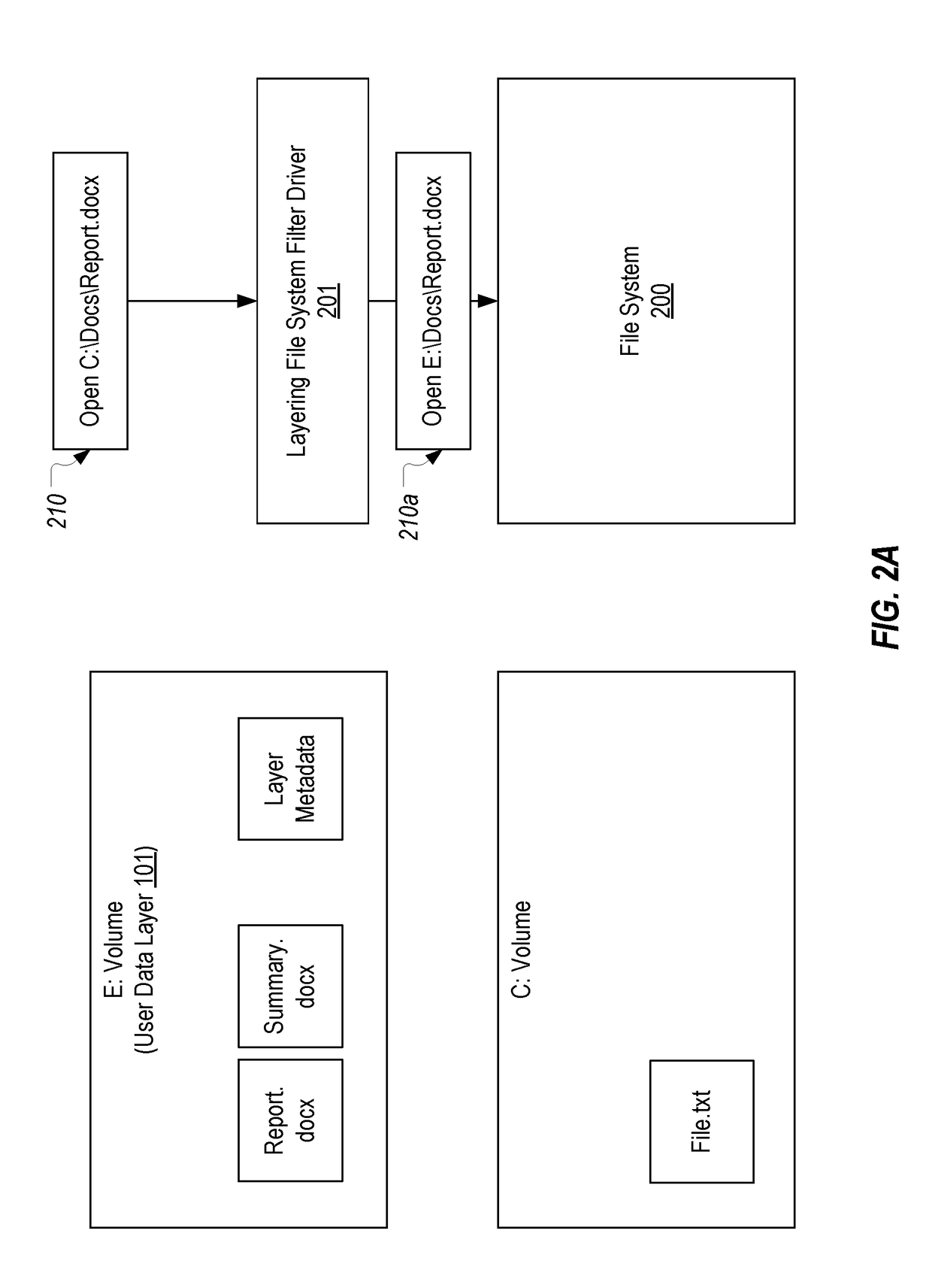Renaming a directory that resides on a layered volume
- Summary
- Abstract
- Description
- Claims
- Application Information
AI Technical Summary
Benefits of technology
Problems solved by technology
Method used
Image
Examples
Embodiment Construction
[0033]In this specification and the claims, the term “volume” will be used in accordance with its general meaning in a Windows operating system. However, due to the ambiguity that is sometimes associated with this term, it is noted that, for purposes of this description, a volume can generally be viewed as something to which a drive letter (e.g., C:, D:, E:, etc.) is assigned. For example, in a layering system, each layer that is mounted will be assigned a unique drive letter and can therefore be considered a volume.
[0034]The term “layered volume” will be used to refer to volumes whose contents are caused to appear as if they were stored in another volume. In most scenarios, a layered volume will constitute a volume other than the volume on which the operating system is stored. For example, the operating system may typically reside on the C: volume. Then, if an application layer is mounted as the E: volume, it would be considered a layered volume since the layering file system filte...
PUM
 Login to View More
Login to View More Abstract
Description
Claims
Application Information
 Login to View More
Login to View More - R&D
- Intellectual Property
- Life Sciences
- Materials
- Tech Scout
- Unparalleled Data Quality
- Higher Quality Content
- 60% Fewer Hallucinations
Browse by: Latest US Patents, China's latest patents, Technical Efficacy Thesaurus, Application Domain, Technology Topic, Popular Technical Reports.
© 2025 PatSnap. All rights reserved.Legal|Privacy policy|Modern Slavery Act Transparency Statement|Sitemap|About US| Contact US: help@patsnap.com



